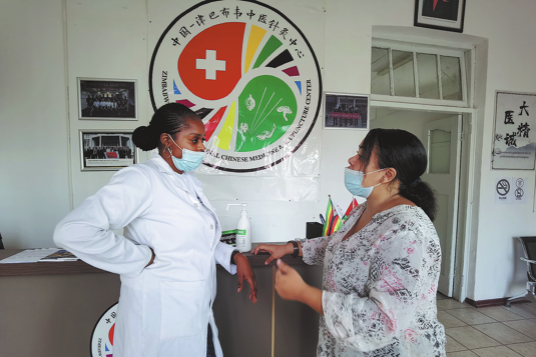COVID-19 spread subsiding across China: NDCPA

The upward trend of COVID-19 infections across China is subsiding, with the epidemic having peaked or starting to decline in most regions and the dominant strain posing no significant threat, the National Disease Control and Prevention Association (NDCPA) said on Wednesday.
Since March, the spread of influenza and other respiratory diseases has been maintained at a low level in China, but the COVID-19 epidemic was trending upward, according to the administration.
Through April, the nation reported about 168,500 COVID-19 infections, including 340 severe cases and nine related deaths. The COVID-19 positivity rate among all influenza-like cases at sentinel hospitals registered a small increase, growing from seven percent for the seven-day period starting on March 31 to 15.8 percent for the period starting on April 28, data released on Friday shows.
During an interview with Xinhua News Agency on Wednesday, the administration said that in most provincial-level regions, the spread of COVID-19 infections has already reached a peak or begun slowing.
"The transmission of the disease in southern provinces is more serious than in the northern provinces," it added.
However, "the numbers of fever clinic visits and severe cases have not exceeded levels seen during previous waves, and there has been no major impact on normal operations of medical services," said the administration.
Data shows that the primary strain in circulation is NB.1.8.1, an offspring of an Omicron subvariant called XDV.
"The majority of infections only exhibit mild symptoms or are asymptomatic. There is no significant change in the dominant strain's pathogenicity or clinical severity," it said, adding that current testing kits and drugs remain effective.
An Zhijie, a researcher at the Chinese Center for Disease Control and Prevention, said during a news conference last week that data from the World Health Organization shows a rise in the numbers of COVID-19 cases in West Africa, Central America and the Caribbean, and parts of Europe and Asia.
He suggested that outbound travelers learn about the epidemic situation in their destinations beforehand and wear masks when using planes or trains. It is also important to maintain hand hygiene and keep good ventilation, he said.
Children, the elderly and people with chronic diseases should get vaccinated. Their families should also keep an eye on their health condition and take them to hospital promptly if they show symptoms such as fever and coughing, An added.
Zhong Nanshan, a prominent respiratory disease expert, said during an academic conference held over the weekend that when the elderly with chronic diseases exhibit symptoms, it is vital to perform tests on them to determine if they contract influenza flu or COVID-19 and deliver targeted medicines as soon as possible.
- Xi attends carrier's commissioning
- Senior Xi'an official facing probe by China's anti-corruption watchdogs
- Philippines risks creating trouble for itself: China's defense ministry
- Newborn with congenital heart disease receives life-saving surgery in Yunnan
- Hong Kong charity signs diplomatic talent deal with Beijing university
- Aircraft carrier Fujian, commissioned




































